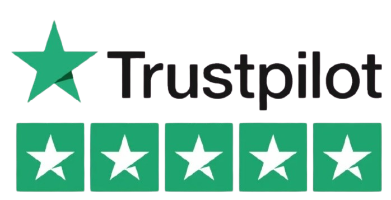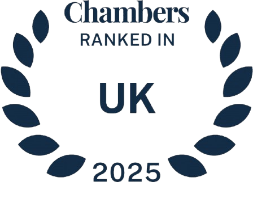Section A: What is the UK Immigration Salary List?
The Immigration Salary List (ISL), as set out in Appendix Immigration Salary List, specifies occupations that benefit from lower salary thresholds. The ISL replaced the Shortage Occupation List on 4 April 2024. Recent updates include HC 836 (24 June 2025) and HC 997 (1 July 2025), with further amendments in HC 1333 (14 October 2025).
Since 22 July 2025, the ISL no longer lowers the minimum skill level required for sponsorship under the Skilled Worker route. Instead, inclusion on the ISL gives a discount to the general salary threshold only. ISL roles still require 100% of the occupation’s going rate. For RQF 6+ ISL roles the cash floor is £33,400 instead of £41,700. For eligible RQF 3–5 ISL roles, where sponsorship is permitted under the TSL or transitional rules, the floor is £25,000. The going rate is still required in full in all cases.
New Skilled Worker sponsorship now generally requires RQF Level 6, with RQF 3–5 roles only sponsorable if they appear on the Temporary Shortage List (TSL) or the worker falls within transitional provisions. The ISL therefore currently operates alongside the Temporary Shortage List (TSL), since ISL jobs normally must be at RQF Level 6 to be newly sponsored unless they also appear on the TSL or the worker benefits from transitional protections. Both lists are currently subject to review by the Migration Advisory Committee (MAC).
ISL RQF 6+ roles (Option D) require £33,400 and 100% of the going rate from Table 1/1a. ISL RQF 3–5 roles (Option I), where eligible, require £25,000 and 100% of the going rate from Table 2/2aa/2a. Discounts cannot be combined. If you use an ISL/TSL list option (D or I), you cannot also claim a new-entrant discount (E or J) on the same application.
For RQF 3–5 sponsorship made on or after 22 July 2025, new dependants are not permitted. Existing dependants with leave granted before that date may continue in line with their current visa terms.
| RQF Level | On ISL? | On TSL? | Sponsorable? |
|---|---|---|---|
| RQF 6+ | Yes | N/A | Yes |
| RQF 3–5 | Yes | No | No |
| RQF 3–5 | Yes | Yes | Yes |
| RQF 3–5 | No | Yes | Yes |
| RQF 3–5 | No | No | No |
Entries on the ISL show a removal date of 31 December 2026. Care workers and senior care workers (SOC 6135/6136) show 22 July 2028. The Home Office can remove entries earlier, so employers should plan on the basis that eligibility can change at short notice.
DavidsonMorris Strategic Insight
The ISL now only discounts the general salary threshold, and the full going rate still applies.
Don’t use the ISL in isolation. Check Appendix Skilled Occupations for the applicable going rate and option tables, and use the Temporary Shortage List to confirm whether an RQF 3–5 role is sponsorable.
Section B: Immigration Salary List Minimum Salary & Skills Thresholds
From 22 July 2025, the general Skilled Worker threshold under Option A rose to £41,700 and 100% of the occupation’s going rate, whichever is higher.
ISL entries carry lower salary floors and the discount is against the general threshold only. For RQF 6+ occupations on the ISL (Table 1, Option D), sponsors are required to pay at least £33,400 per year and 100% of the going rate from Table 1/1a, and to meet the £17.13 per hour floor based on no more than 48 hours per week. For RQF 3–5 ISL occupations, where sponsorship is permitted under the TSL or transitional provisions, sponsors are required to pay £25,000 and 100% of the going rate from Table 2/2aa/2a.
Care workers and senior care workers (SOC 6135/6136) under the Health and Care Worker route require £25,000 per year or £12.82 per hour, whichever is higher, and the relevant going rate. New entry clearance recruitment ended on 22 July 2025. Applications are permission to stay only and are restricted by SW 6.1B, including a requirement for at least three months’ prior lawful employment with the same sponsor. These codes remain listed to 22 July 2028.
Workers in any new RQF 3–5 sponsorship after 22 July 2025 cannot bring new dependants. Existing dependants with leave granted before that date may extend their visas.
From 22 July 2025, most RQF 3–5 roles can only be newly sponsored under the Skilled Worker route if they appear on the Temporary Shortage List. Inclusion on the ISL alone is not sufficient to override the new minimum skill level requirement. Employers should audit salaries and job descriptions to ensure compliance for applications, for example extensions, job changes and settlement.
You cannot combine discounts. A role on the ISL or TSL can be sponsored either under its list option (D or I) or, if eligible, under the new entrant option (E for Table 1 or J for Table 2), but not both at the same time. Regardless of age, education or career stage, sponsors need to meet the full list salary and 100% of the going rate for the chosen option.
Continuing employment bands (Options F–J, Table 2) apply to Table 2 health and education codes. Separate transitional tables (2a/2aa) allow certain workers first sponsored before 4 April 2024, or before 22 July 2025 for some codes, to continue under earlier arrangements until 4 April 2030 for extensions, job changes or supplementary employment.
The annual pay floors are £31,300 (Option F), £28,200 (Option G) or £25,000 (Options H, I, J), with the required percentage of the lower going rate, at 100%, 90%, 80% or 70% as applicable. No hourly floor applies to Options F–J.
No broader grace period exists. Applications submitted on or after 22 July 2025 need to meet these thresholds when making a new application, for example to extend the visa.
Health and Care applicants (Table 2, Options F–J) are exempt from the £41,700 general threshold, requiring £31,300, £28,200 or £25,000, depending on the option, and the relevant percentage of the lower going rate (page 36).
Roles on national pay scales, for example NHS Agenda for Change, Medical and Dental and STPCD, are required to meet the higher of the band rate or the applicable threshold, plus the going rate.
Options G–J and new entrant discounts are not available at settlement. At indefinite leave to remain, only the going rate column applies and the relevant settlement salary requirements need to be met in full.
Skilled Worker visa holders sponsored in RQF 3–5 roles before 22 July 2025 may continue to be sponsored in those roles under transitional rules, provided they maintain continuous permission and remain in the same sponsored role with the same sponsor.
DavidsonMorris Strategic Insight
The Skilled Worker visa minimum salary rules are notoriously challenging with no room for discretion or error.
You first need to look at which Option applies (A–E for Table 1, or F–J for Table 2/transition), and then price the role based on Appendix Skilled Occupations – the ISL is not a salary table, so always pull going rates from Appendix Skilled Occupations.
Where the role is on the ISL, a lower general threshold will apply but the going rate has to be met in full.
Remember that overtime, allowances and tips don’t count towards the salary figure, only guaranteed basic pay can be used, and discounts can’t be combined, only one can be used. So use either an ISL/TSL list option (D or I) or a new-entrant option (E or J), not both.
Section C: How to use the UK Immigration Salary List
To begin, the employer has to identify the correct Standard Occupational Classification (SOC) codes for the role they wish to sponsor. You should consult the most recent version of the list, available on GOV.UK under Appendix Immigration Salary List.
These SOC codes are based on the SOC 2020 coding system and the latest Office for National Statistics pay data. This followed a change from the 2010 system in April 2024. Going-rate tables use a 37.5-hour baseline and are pro-rated to the sponsor’s stated weekly hours.
Employers should ensure they select the correct SOC code for a sponsored work visa. This information will be scrutinised by the Home Office and you may need to provide evidence to support the choice of SOC code, particularly where a lower salary threshold is being applied. Incorrect SOC selection, especially for RQF 3–5 roles, can result in rejection if the role is not on the Temporary Shortage List or protected by transitional arrangements.
When selecting a SOC code, look at the occupation details and job description rather than the job title, and ensure this reflects the individual’s job description, duties, skills and experience. Selecting an incorrect SOC code can result in a refused application.
Next, you will need to apply the correct minimum salary threshold.
For RQF Level 6 or higher roles on the ISL, the salary needs to be at least £33,400 per year and 100 percent of the occupation’s going rate.
For RQF Level 3–5 roles, the salary needs to be at least £25,000 per year and the full going rate, and sponsorship is only permitted where the occupation appears on the Temporary Shortage List or the worker is covered by transitional provisions.
The ISL discount applies only to the general threshold. The occupation’s going rate is still required in full. Options A–E are also subject to the £17.13 per hour check based on no more than 48 hours per week. Meeting the annual figure does not automatically satisfy the hourly floor, so you should confirm the hourly calculation from the contract. Options F–J do not have an hourly floor.
Where an employer relies on the continuing employment salary bands (Options F–J), they may only do so if the sponsored worker held valid Skilled Worker leave in the same SOC code before 22 July 2025 and remains in that occupation. These transitional salary floors (£31,300, £28,200 or £25,000 depending on the option used) continue to apply in such cases but are not available to new hires.
To remain compliant, employers should ensure that job advertisements, offer letters, contracts and Certificates of Sponsorship accurately reflect the updated ISL salary thresholds. They should also retain records showing that salaries meet the required level in guaranteed gross pay, exclude bonuses and allowances, and satisfy the £17.13 hourly calculation based on no more than 48 hours per week.
Finally, employers are advised to monitor updates from the Migration Advisory Committee throughout 2026, as it conducts a full review of the ISL and the Temporary Shortage List. The Committee’s recommendations could result in further salary increases, structural changes to sponsorship eligibility or the removal of certain roles from the list.
Immigration Salary List Case Studies
Case study 1
A regional manufacturer plans to sponsor a technician whose occupation appears on the ISL on a 37.5-hour contract. Being on the ISL reduces the Skilled Worker general threshold to 80% of the usual minimum, so the comparison is between that reduced general threshold and the full going rate for the SOC. The offer is £35,000 and the going rate is £36,000. Because pay must meet the higher of the two figures, £35,000 falls short and the role is not eligible at that salary. Increasing pay to at least £36,000 resolves eligibility. Record the ISL basis in the file note and reflect the final salary and hours consistently in the CoS and offer.
Case study 2
An NHS trust recruits into a Health and Care Worker role that appears on the ISL at 30 hours per week. ISL general thresholds are set on a 37.5-hour baseline and must be pro-rated for part-time hours, and the occupation’s going rate or AfC minimum must also be pro-rated. If the pro-rated ISL general for 30 hours is £20,000 and the pro-rated AfC minimum is £22,500, the lawful salary floor is £22,500 because employers need to pay the higher figure. If the AfC minimum were £19,800, the floor would be £20,000 on the ISL general. Document the pro-rating steps for both figures and ensure the CoS, contract and payroll align.
Case study 3
A Skilled Worker already sponsored full time is offered an additional 10 hours a week with another employer. Supplementary employment of up to 20 hours a week is permitted if the second job is in the same sector and level as the sponsored role or is in an occupation on the ISL, and the extra hours must be outside the contracted hours of the main job. If the second job’s SOC appears on the ISL, the worker can take the extra hours without a new CoS, provided the 20-hour cap and all other conditions are met. If the second job is neither same sector/level nor on the ISL, sponsorship and a new grant of permission are required before any work starts.
DavidsonMorris Strategic Insight
In practice, the main risk is SOC selection. Get this wrong, either through genuine error or stretching duties to match, the rest is at risk. SOC codes have to be chosen by day-to-day duties not job title. Make sure the job description, offer, employment contract and CoS all match, with no inconsistencies in figures or working hours. Watch out for part-time or compressed hours, and how pro rata rules apply.
For part-time or compressed hours, apply pro-rating correctly from the 37.5-hour baseline and, for Options A–E, check the £17.13 per hour rule using no more than 48 hours a week. Keep a file note explaining the SOC match and retain the underlying documents in line with Appendix D so you are inspection-ready.
Section D: Immigration Salary List 2025
The ISL records which occupations qualify, where in the UK they apply, and the removal date. Salary thresholds are not listed in the ISL and should be taken from Appendix Skilled Occupations for the option being used.
| Occupation code | Job types included on the Immigration Salary List | Areas of the UK which qualify | Removal date |
|---|---|---|---|
| 1212 | Managers and proprietors in forestry, fishing and related services – only “fishing boat masters” | Scotland only | 31 December 2026 |
| 1232 | Residential, day and domiciliary care managers and proprietors – all jobs | UK wide | 31 December 2026 |
| 2111 | Chemical scientists – only jobs in the nuclear industry | Scotland only | 31 December 2026 |
| 2112 | Biological scientists – all jobs | UK wide | 31 December 2026 |
| 2115 | Social and humanities scientists – only archaeologists | UK wide | 31 December 2026 |
| 2142 | Graphic and multimedia designers – all jobs | UK wide | 31 December 2026 |
| 3111 | Laboratory technicians – only jobs requiring 3 or more years’ related on-the-job experience. This experience must not have been gained through working illegally. | UK wide | 31 December 2026 |
| 3212 | Pharmaceutical technicians – all jobs | UK wide | 31 December 2026 |
| 3411 | Artists – all jobs | UK wide | 31 December 2026 |
| 3414 | Dancers and choreographers – only skilled classical ballet dancers or skilled contemporary dancers who meet the standard required by internationally recognised UK ballet or contemporary dance companies. The company needs to be endorsed as internationally recognised by a UK industry body such as the Arts Councils (of England, Scotland or Wales). | UK wide | 31 December 2026 |
| 3415 | Musicians – only skilled orchestral musicians who are leaders, principals, sub-principals or numbered string positions, and who meet the standard required by internationally recognised UK orchestras. The orchestra needs to be a full member of the Association of British Orchestras. | UK wide | 31 December 2026 |
| 3416 | Arts officers, producers and directors – all jobs | UK wide | 31 December 2026 |
| 5119 | Agriculture and fishing trades not elsewhere classified – only jobs in the fishing industry | UK wide | 31 December 2026 |
| 5213 | Welding trades – only high integrity pipe welders, where the job requires 3 or more years’ related on-the-job experience. This experience must not have been gained through working illegally. | UK wide | 31 December 2026 |
| 5235 | Boat and ship builders and repairers – all jobs | Scotland only | 31 December 2026 |
| 5312 | Stonemasons and related trades – all jobs | UK wide | 31 December 2026 |
| 5313 | Bricklayers – all jobs | UK wide | 31 December 2026 |
| 5314 | Roofers, roof tilers and slaters – all jobs | UK wide | 31 December 2026 |
| 5316 | Carpenters and joiners – all jobs | UK wide | 31 December 2026 |
| 5319 | Construction and building trades not elsewhere classified – only retrofitters | UK wide | 31 December 2026 |
| 6129 | Animal care services occupations not elsewhere classified – only racing grooms, stallion handlers, stud grooms, stud hands, stud handlers and work riders | UK wide | 31 December 2026 |
| 6131 | Nursing auxiliaries and assistants – all jobs. Note: For Skilled Worker purposes, SOC 2020 occupation code 6131 only applies to roles in environments where registered nurse roles also exist. | UK wide | 31 December 2026 |
| 6135 | Care workers and home carers – all jobs, except jobs with a working location in England are only eligible in this SOC 2020 occupation code where the sponsor holds registration with the Care Quality Commission and is currently carrying on a regulated activity. Private households or individuals (other than sole traders sponsoring someone to work for their business) cannot sponsor Skilled Worker applicants. | UK wide | 22 July 2028 |
| 6136 | Senior care workers – all jobs, except jobs with a working location in England are only eligible in this SOC 2020 occupation code where the sponsor holds registration with the Care Quality Commission and is currently carrying on a regulated activity. | UK wide | 22 July 2028 |
| 9119 | Fishing and other elementary agriculture occupations not elsewhere classified – only deckhands on large fishing vessels (9 metres and above) where the job requires the worker to have at least 3 years’ full-time experience in using their skills. This experience must not have been gained through working illegally. | UK wide | 31 December 2026 |
DavidsonMorris Strategic Insight
The ISL is subject to amendment, usually with little to no notice. Most ISL roles currently show a removal date of 31 December 2026, (though care worker codes 6135 and 6136 are 22 July 2028), so longer term planning will be necessary where ISL roles are concerned.
Always check the live ISL on the .gov website on the date you assign the CoS and keep a time-stamped version to show the list at the time of the application.
Section E: Summary
The Immigration Salary List now works as a targeted discount to the general Skilled Worker threshold while keeping the full going rate in play. For new sponsorship from 22 July 2025, roles are generally required to be RQF 6 or higher. RQF 3–5 roles are only eligible where listed on the Temporary Shortage List or covered by transitional tables. ISL roles use £33,400 for RQF 6+ or £25,000 for eligible RQF 3–5, and in every case sponsors are required to meet 100% of the going rate. Discounts cannot be combined with new entrant options.
Options A–E are subject to the £17.13 hourly check based on no more than 48 hours each week, so annual figures need to align with contracted hours. New RQF 3–5 sponsorship does not allow new dependants. ISL entries carry removal dates, generally 31 December 2026, with care worker codes showing 22 July 2028. Lists can change with limited notice. Sponsors should verify the SOC code, confirm the correct option and table, evidence salary and hours on the CoS and in payroll records, and plan workforce timelines around ISL and TSL reviews through 2026.
Section F: Need assistance?
As employer solutions lawyers, DavidsonMorris advises employers on all aspects of work visa sponsorship, in particular hiring workers under the Skilled Worker visa route. With the Immigration Salary List a relatively new feature, and since it remains subject to change, employers may find this a complex area to navigate. For advice on the ISL, its implications on your recruitment processes, visa eligibility, assigning SOC codes or any issue relating to hiring points-based visa workers, contact us.
Section G: Immigration Salary List FAQs
What is the UK Immigration Salary List?
The Immigration Salary List is a Home Office list of Skilled Worker occupations that benefit from a lower general threshold. From 22 July 2025 it does not reduce the going rate and it does not override the RQF Level 6 skill requirement. RQF 3–5 roles are only sponsorable if they are on the Temporary Shortage List or covered by transitional provisions.
Can part-time roles meet the salary requirements?
Going rates are pro-rated to contracted hours from a 37.5-hour baseline. For Options A–E you also need to meet the £17.13 per hour check using no more than 48 hours per week. Options F–J do not have an hourly floor. Keep evidence of the hour-by-hour calculation with the contract and CoS.
Are salary thresholds different for new entrants?
New entrants can be sponsored under Option E (Table 1) or Option J (Table 2) if they meet the criteria. These options apply lower percentages of the going rate with floors of £33,400 for Table 1 and £25,000 for Table 2. You cannot combine a new-entrant option with an ISL or TSL list option on the same application.
Do all benefits count towards meeting the salary threshold?
Only guaranteed gross basic pay in sterling counts. Overtime, bonuses, tips, allowances and benefits in kind are excluded. Make sure the contracted hours align with the hourly calculation where applicable.
How often is the salary list updated?
Entries can change at short notice. Most ISL roles carry a removal date of 31 December 2026, while care worker codes 6135 and 6136 show 22 July 2028. The Migration Advisory Committee is reviewing the ISL and Temporary Shortage List through 2026, so sponsors should check GOV.UK on the date the CoS is assigned.
What happens if the salary does not meet the threshold?
Applications are likely to be refused. Non-compliance can also trigger sponsor action such as downgrading or, in serious cases, revocation. Check both the list floor and 100 per cent of the going rate for the option you are using.
Where can I find the latest salary thresholds?
Use Appendix Skilled Occupations for going rates and the relevant options tables, and Appendix Immigration Salary List for which occupations qualify, the geographic coverage and removal dates. Always rely on the live GOV.UK versions.
Can I combine ISL with PhD or other tradeable discounts?
No. Choose one path for points. If you use an ISL or TSL option, you cannot also apply a new-entrant or PhD discount. The going rate still needs to be met at the percentage that applies to the chosen option.
Can workers in RQF 3–5 roles bring dependants?
New RQF 3–5 sponsorship granted on or after 22 July 2025 does not allow new dependants. Dependants who already held leave before that date can continue in line with their existing permission.
Section H: Glossary
| Term | Definition |
|---|---|
| UK Immigration Salary List (ISL) | The appendix that names Skilled Worker occupations eligible for a lower general threshold. From 22 July 2025 it does not reduce the going rate or the skill level. Most entries show a removal date of 31 December 2026, with 6135 and 6136 showing 22 July 2028. |
| Skilled Worker visa | The main UK work route for eligible roles where applicants meet skill, salary, English language and sponsorship rules. For new sponsorship from 22 July 2025, roles are generally required to be RQF 6 or higher. |
| Salary threshold | The minimum annual pay, and where applicable the hourly rate, that the role needs to meet under the chosen option A-J and any ISL or TSL list salary. |
| New entrants | Applicants who meet Home Office new entrant criteria, for example under 26 or recent UK graduates. Option E (Table 1) and Option J (Table 2) apply lower percentages with floors of £33,400 and £25,000. These cannot be combined with ISL or TSL list options. |
| Annual salary | The contracted gross yearly basic pay used for sponsorship calculations. When converting from hourly pay, only up to 48 hours per week can be counted for Options A-E. |
| Hourly rate | The per hour pay figure used to check the £17.13 floor for Options A-E from 22 July 2025, calculated on no more than 48 hours per week. Options F-J do not have an hourly floor. |
| Pro rated salary | The adjusted pay for part time hours. For Options A-E the £17.13 hourly floor still applies. Options F-J have no hourly floor, but the relevant option threshold and going rate percentage still apply. |
| Healthcare and education roles | Table 2 codes, including NHS Agenda for Change and teachers’ scales. These are not subject to the £41,700 general threshold. They need to meet the option floor for Table 2 and the required percentage of the going rate, and where a national pay scale applies, the band rate if higher. |
| Guaranteed pay | Fixed, contractually assured basic pay in sterling that counts toward thresholds. Overtime, bonuses, tips, allowances and benefits in kind are excluded. |
| Sponsor licence | Home Office authorisation that permits a UK employer to assign Certificates of Sponsorship and hire non resident workers. |
| Immigration Rules | The legal framework for entry, stay and employment. Recent changes include HC 836 (24 June 2025), HC 997 (1 July 2025) and HC 1333 (14 October 2025). |
| Economic conditions | Factors such as inflation and vacancy rates that inform annual uprating of salary tables each April using the latest ASHE data. |
| Labour market needs | Domestic shortages identified by the Migration Advisory Committee, reflected in the ISL and the Temporary Shortage List. |
| Non cash benefits | Perks such as accommodation or a car that do not count toward meeting salary thresholds. |
| Application refusal | A negative decision, often where pay is below the list floor or going rate, the wrong SOC code is used, or the £17.13 hourly rule for Options A-E is not met. |
| Home Office | The UK government department responsible for immigration policy, sponsor compliance and visa processing. |
| Periodic review | The routine refresh of salary tables each April and the MAC review of the ISL and TSL through 2026. Employers should check the live GOV.UK tables on the date the CoS is assigned. |
Section I: Additional Resources & Links












